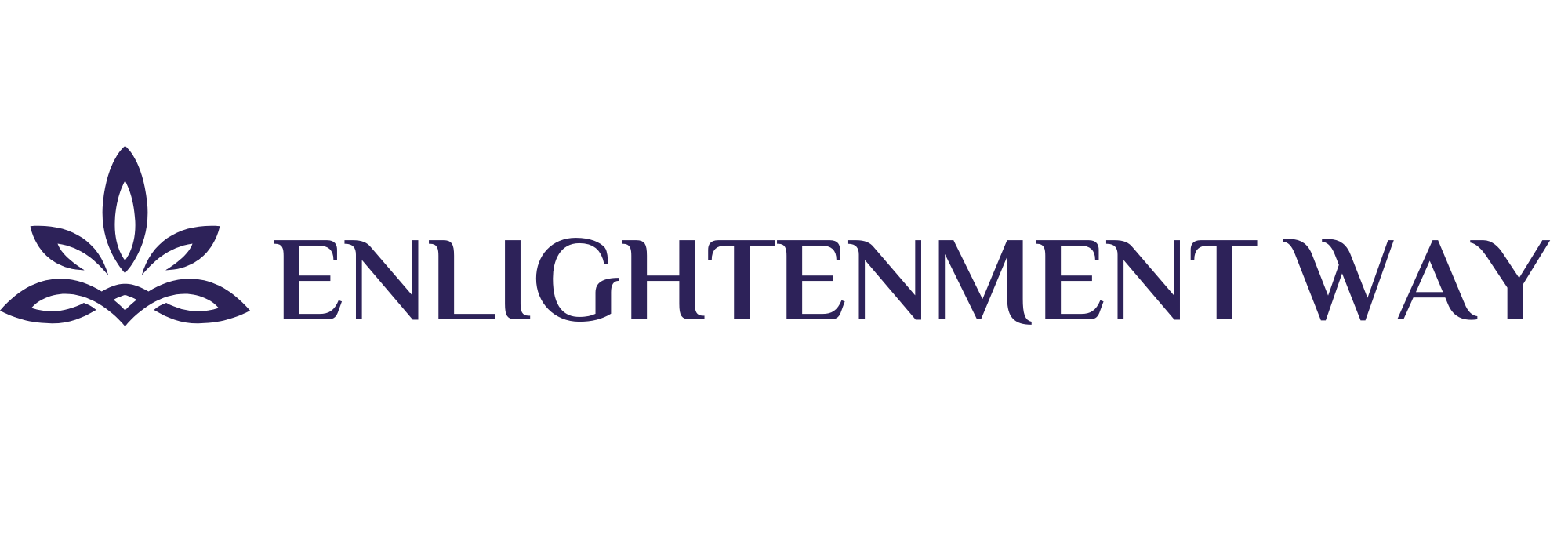To identify the brainwave frequency of pure consciousness, first guarantee a controlled environment and prepare the EEG setup with ideal electrode placement and equipment familiarity. Begin by relaxing in a quiet space, monitoring baseline brainwaves to establish a standard for comparison.
Next, engage in regular meditation practices, exploring techniques that foster deep relaxation. Regular meditation enhances theta wave activity, vital for accessing states of pure consciousness. Analyze the EEG data to pinpoint theta (4-8 Hz) and epsilon (0-0.5 Hz) frequencies, which correlate with higher spiritual awareness and profound peace. Through consistent practice, you’ll gradually discover how these frequencies manifest and influence your consciousness, leading to transformative insights.
Key Takeaways
- Familiarize with EEG equipment and ensure proper electrode placement for accurate brainwave detection.
- Record baseline brainwaves in a quiet environment to establish a normal frequency range.
- Engage in regular meditation practices to enhance theta wave (4-8 Hz) activity, linked to states of pure consciousness.
- Analyze EEG data to identify theta and epsilon (0-0.5 Hz) wave patterns during deep meditation.
- Correlate subjective experiences of pure consciousness with observed EEG wave synchronizations.
Preparing for EEG Measurement
Before you begin an EEG measurement, it’s important to create a distraction-free environment to minimize noise interference that could skew brainwave data.
You’ll want to guarantee the space is quiet, pulling you away from the hustle and bustle that could disrupt the purity of your EEG readings.
Next, prep the scalp properly. Use alcohol wipes to clean the area where electrodes will be placed. This isn’t just about hygiene; it’s about enhancing electrode conductivity.
You’re working for the most accurate reflection of electrical activity in the brain, and cleanliness is key.
Choosing the right electrodes and their placement is essential. Each EEG setup may vary slightly, so it’s critical to select equipment that suits your specific EEG system.
This guarantees that the brain waves captured are as accurate as possible.
Get comfortable with the EEG equipment and software beforehand. Familiarize yourself with its quirks and features, including how to calibrate it effectively.
This knowledge will make the actual measurement process smoother and more reliable.
Related Post: Mastering Which Brainwave Frequency Works Best for Enhanced Robotic Affirmations
Setting Up the Muse System
To set up your Muse system, start by verifying the headband is fully charged and that you’ve installed the Muse app on your iOS or Android device. This initial step is vital for a smooth start to your journey toward deeper self-awareness.
Here’s what you need to do next:
- Connect the Headband: Follow the app’s on-screen instructions to connect your Muse headband via Bluetooth. Make sure the sensors are correctly positioned on your forehead to capture accurate EEG readings.
- Select Your Meditation Type: Choose the type of meditation session that resonates with your current needs, whether it’s focus training, relaxation, or preparing for sleep. This customization enhances your path to liberation.
- Calibrate the System: Allow the Muse app to guide you through the calibration process. This step guarantees that the headband is correctly detecting your brainwave activity, setting the stage for a transformational meditation session.
Recording Baseline Brainwaves
Before you start recording baseline brainwaves, you’ll need to properly set up your EEG device and confirm that the individual is comfortably seated in a quiet environment.
It’s vital to capture a clear and stable brainwave reading, so maintaining a relaxed state with minimal distractions is significant; aim for a recording session lasting between 5 and 10 minutes.
Once you’ve gathered the data, analyzing it for predominant brainwave frequencies will provide insights into the individual’s typical mental state and how it varies over time.
Preparing for Measurement
Make certain you’re in a quiet environment when preparing to measure baseline brainwaves, as external noise can greatly alter brain activity. The serene surroundings will help in accurately recording the brain’s natural state, essential for identifying the frequency of pure consciousness.
Here are three important steps to guarantee effective preparation:
- Set Up the Electroencephalogram (EEG): Properly position the EEG electrodes across the scalp. This setup is critical for capturing detailed electrical activity and distinguishing between different brainwave frequencies, such as Alpha Brain Waves and Theta Waves.
- Guarantee Comfort: The individual being measured must be in a comfortable position. Any physical discomfort can cause muscle tension, which might influence the brainwave data. Comfort aids in achieving a relaxed state conducive to baseline recording.
- Monitor the Mental State: Keep a close eye on the emotional and cognitive state of the individual. It’s essential that they remain as disengaged from active thinking or emotional disturbances as possible to avoid skewing the results.
Optimal Recording Conditions
Having established the necessary preparations, you now need to focus on creating ideal recording conditions to accurately capture baseline brainwaves. You’ll want to guarantee the environment is quiet and free from distractions. External noises can considerably interfere with EEG readings, skewing the real measures of brainwave frequency that you’re aiming to analyze.
To achieve optimal recording conditions, it is crucial to be meticulous about your setup. Here’s a simple guide to follow:
| Requirement | Importance | How to Achieve |
|---|---|---|
| Quiet Environment | Essential | Use soundproofing or choose a secluded location |
| Quality Equipment | Critical | Invest in high-quality electrodes and guarantee they’re properly placed |
| Comfortable Setting | Necessary | Have the subject sit or lie down comfortably |
| Controlled Setting | Vital | Maintain consistent lighting and temperature |
Before you start recording, allow the subject a few minutes to acclimate to the environment. This helps in stabilizing their brainwave activity, guaranteeing that the baseline you record is as pure and undisturbed as possible.
Remember, maintaining a controlled setting is critical for minimizing variabilities that could impact your measurements. This approach not only facilitates accurate data collection but also enhances the reliability of your EEG readings.
Analyzing Baseline Data
Once you’ve secured the ideal conditions, you’ll start recording baseline brainwaves using an EEG. This initial step captures the vital resting state of your brain, providing a reference point for any shifts in activity during different states of consciousness.
Here’s why this baseline is fundamental:
- Foundation for Comparison: It establishes a standard to measure any deviations or enhancements in brain frequencies during meditation or other heightened states.
- Clarity in Data: With minimal external noise, the EEG can accurately reflect your brain’s true activity, ensuring that the data isn’t skewed by surrounding disturbances.
- Duration Matters: Collecting data over 5 to 10 minutes allows for a thorough view of your brain’s natural rhythm, smoothing out any temporary spikes or drops.
Understanding your brain’s baseline activities is essential. You’re not just looking at random spikes or dips in brain activity; you’re identifying patterns that represent your consciousness in its purest form.
As you explore deeper into this journey, remember, these initial readings are your map to investigating the vast territories of your mind, guiding you towards true liberation from everyday distractions.
Initiating Meditation Protocols
As you prepare to start your meditation journey, it’s essential to choose the right technique and set up an ideal environment.
First, select a meditation method that resonates with you, whether it’s focusing on your breath, using a mantra, or following a guided session.
Then, make certain your surroundings are quiet and comfortable, free from interruptions, to facilitate deeper relaxation and effective brainwave engagement.
Meditation Technique Selection
To kickstart your journey into meditation, first select a technique that resonates with your personal goals; for instance, Transcendental Meditation can help you access deeper states of consciousness, while mindfulness meditation focuses on enhancing your present-moment awareness.
Choosing the right meditation technique is essential as it sets the foundation for your mental state and the effectiveness of brainwave entrainment.
Here are three key points to take into account when selecting your meditation technique:
- Understand Your Goals: Determine what you hope to achieve—whether it’s reaching Alpha waves for relaxation or exploring deeper consciousness.
- Explore Entrainment Tools: Utilize guided meditations or audio tracks designed for brainwave entrainment to help you enter your desired mental state more easily.
- Commit to Regular Practice: Aim for at least 20 minutes daily to gradually enhance your ability to modulate brainwaves and deepen your meditative states.
Optimal Environment Setup
Set up the perfect meditation space by choosing a quiet, dimly lit area that’s free from distractions. In this ideal environment setup, you’ll find that deep relaxation comes more naturally, fostering a state of pure consciousness necessary for effective meditation.
Make sure your seating or lying position is comfortable to prevent any physical distractions that might pull you from your meditative focus.
Introduce calming scents such as lavender or sandalwood to enhance the atmosphere. These soothing aromas can greatly aid in achieving a deeper level of mindfulness and relaxation.
Soft ambient music or the gentle sounds of nature played at a low volume can also contribute to creating a tranquil environment, making it easier for you to immerse yourself in meditation.
Crucially, maintain a consistent schedule for your meditation practice. Routine is your ally here, as it conditions your mind to slip into a meditative state with greater ease over time.
By committing to a regular practice, you signal to your mind that it’s time to calm down and focus, paving the way for a more profound and transformative meditation experience.
Stick to this setup, and watch your meditation sessions become more effective and fulfilling.
Analyzing Theta Wave Patterns
Theta wave patterns, oscillating between 4 to 8 Hz, are essential in light sleep, deep relaxation, and meditation, providing a gateway to your subconscious thoughts and emotions.
These waves are key to tapping into deeper cognitive functions and achieving a state of pure consciousness.
When you’re looking to harness the power of theta waves, consider:
- Emotional Processing: Theta waves facilitate deep emotional connections with your inner self, enhancing your ability to process complex feelings. This can lead to profound insights and emotional healing.
- Memory Consolidation: During phases of REM sleep, theta waves help in strengthening memories, integrating new information with established knowledge which supports long-term retention and learning.
- Enhanced Relaxation: Techniques like meditation, particularly Vipassana, and neurofeedback training can increase your theta activity. This not only assists in deep relaxation but also improves your overall emotional well-being.
Understanding and enhancing your theta wave activity can greatly impact your mental health and cognitive abilities.
Identifying Moments of Pure Consciousness
Building on your understanding of theta wave patterns, you may find it intriguing how these frequencies can lead to identifying moments of pure consciousness. These theta oscillations, typically ranging from 4 to 8 Hz, are essential during deep relaxation or meditation, facilitating emotional processing and enhancing memory retrieval.
As you explore deeper into meditation practices, you’ll begin to notice a profound sense of stillness and clarity. This sensation is often a sign that you’re shifting into slower brainwave states such as Epsilon, which is closely linked to pure consciousness and operates at 0 to 0.5 Hz.
It’s in these moments that you may experience heightened spiritual awareness and a deeper connection to your inner self. To consistently access these moments, engage regularly in meditation practices. This discipline allows you to recognize and harness the synchrony between the slow Epsilon and the faster Theta waves, leading to mystical experiences characterized by profound peace and insight.
Related Post: Enhancing Meditation Practices With a Brainwave Frequency Chart
Interpreting and Reporting Findings
When interpreting the data from EEG studies on Epsilon brainwaves, it’s important to employ rigorous analytical methods to confirm their presence and understand their implications.
You’re aiming to uncover the profound layers of consciousness, where Epsilon waves play a significant role. Utilizing EEG technology, you’ll navigate through complex data to correlate these low-frequency waves with the subjective experiences of consciousness.
Here’s how you can effectively interpret and report your findings:
- Verify Epsilon Waves: Confirm the EEG readings accurately reflect Epsilon wave activity (0 to 0.5 Hz). This verification is essential as these waves are associated with deep meditative states and spiritual awakenings.
- Analyze Subjective Experiences: Connect the dots between the presence of Epsilon waves and the reported subjective experiences. This step is crucial to understanding how these waves influence creativity, intuition, and problem-solving abilities.
- Document Synchronization: Observe how Epsilon waves facilitate the communication across different brain regions. Reporting on this can provide insights into the synchronization of brain hemispheres during profound meditative states.
Frequently Asked Questions
How Do You Know What Frequency Your Brain Is?
To determine your brain’s frequency, you’ll need to engage in brainwave measurement using an EEG device. This tool is essential for your consciousness exploration and mental state evaluation.
Through consistent frequency monitoring, you’ll identify which states, from deep relaxation to heightened alertness, your brain enters during various activities. This knowledge not only enhances personal awareness but also empowers you to better manage your mental health and cognitive functions.
How Do I Know That I Am in Theta State?
To know if you’re in a theta state, monitor your brainwave activity during meditation or right before sleep.
You’ll find your brain oscillating between 4 to 8 Hz, indicative of theta waves. This state is marked by deep relaxation, vivid imagery, and a feeling of timelessness.
It’s key for consciousness exploration, enhancing intuition and emotional processing.
Use meditation techniques and brainwave monitoring to confirm your experiences align with these characteristics.
What Are the Frequencies of the Brain in Consciousness?
In exploring consciousness through brainwave patterns, you’ll find frequencies ranging from the deep Delta (0.5-4 Hz), through Theta (4-8 Hz) and Alpha (8-13 Hz), to the more active Beta (13-32 Hz) and Gamma (32-100 Hz).
Advanced meditation techniques and consciousness research often focus on modulating these frequencies.
Understanding these patterns can guide you towards deeper mindfulness and potentially release new domains of mental and spiritual liberation.
What Are the Levels of Consciousness Frequencies?
You’re maneuvering the consciousness spectrum where brainwave patterns greatly affect your mental state.
Gamma and Beta frequencies keep you alert and problem-solving, while Alpha and Theta waves enhance relaxation and meditation effects.
Delta and Epsilon frequencies round out the spectrum, essential for deep rest and profound meditation states, offering notable frequency benefits.
Understanding these levels supports mental clarity and emotional well-being, empowering you toward a more liberated state of mind.
Conclusion
You’ve now mastered the art of pinpointing the elusive brainwave frequency of pure consciousness, using your trusty Muse system. Remember, while this guide makes it seem like a breeze, genuine moments of pure consciousness are as rare as honest politicians.
So, if your findings suggest you’re a zen master, take it with a grain of salt—or maybe you’re just really good at following instructions. Either way, happy meditating, and may your brainwaves be ever in your favor!




